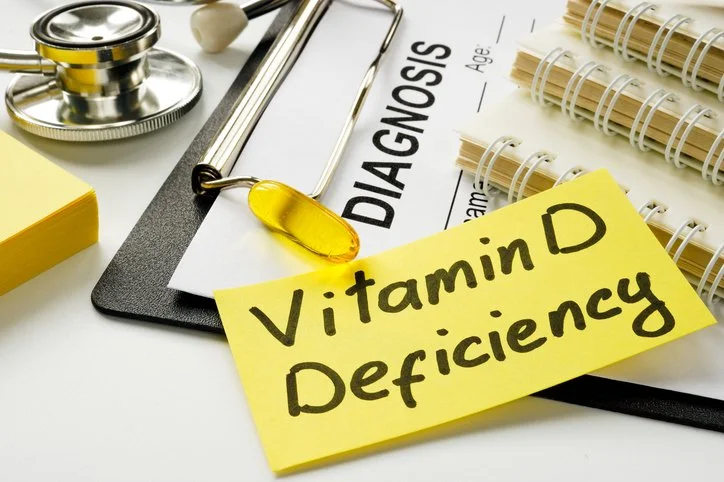Why Vitamin D Supplements Aren’t Enough
Why Vitamin D Supplements Aren’t Enough for Women’s Hormonal Health - And What to Do Instead
Most of the women I work with whether in my clinic or remotely have been told their Vitamin D levels are low and are advised to take a supplement. If you’re taking a daily vitamin D supplement and thinking, “I’ve got this covered,” I want you to pause for a second, because there’s a deeper story here that most women haven’t been told.
Yes, vitamin D is essential for fertility, hormone balance, and overall vitality. But popping a supplement doesn’t mean your body is activating all the right systems, especially the ones tied to your reproductive health.
Let’s talk about sunlight, your skin, and a powerful biological pathway called POMC that can’t be switched on by a pill alone.
The Vitamin D Breakdown: Stored vs. Active
When you take a supplement, you’re increasing your levels of 25(OH)D - that’s the stored form of vitamin D. That’s important, but there’s a catch:
Your body needs to convert that stored form into the active hormone (called 1,25(OH)₂D) to actually impact things like:
Ovulation
Egg quality
Hormone regulation
Immune function
Pregnancy maintenance
And that conversion isn’t guaranteed. It depends on a whole host of things, like kidney health, magnesium levels, inflammation, and more. So just because your lab says your vitamin D level is “normal” doesn’t mean it’s active and doing its job.
It’s possible to have ‘normal’ stored vitamin D levels, yet have low levels of the active hormone due to kidney, parathyroid, or hormonal issues - which are common in women with PCOS, endometriosis, or autoimmune conditions.
What Your Supplements Can’t Do: Activate the POMC Pathway
Let’s introduce a superstar in the skin-brain-hormone connection: Proopiomelanocortin (POMC).
When your skin is exposed to natural UVB sunlight, it doesn’t just make vitamin D - it also activates POMC, which then breaks down into powerful hormones like:
α-MSH, which influences sex hormone signals
β-endorphins, which help regulate mood and reproductive hormones
ACTH, which modulates stress and indirectly supports fertility
This is only triggered by natural sunlight, NOT by oral supplements and not by red light therapy. Red light is amazing for many things but it won’t raise your vitamin D levels or activate the POMC pathway.
If you’ve been using red light therapy thinking it covers all your light needs, here’s your gentle nudge: you still need UVB. Different wavelengths, different jobs. And the best place to get that UVB is outdoors!
Why POMC Matters for Your Fertility and Hormonal Health
This skin-brain-reproductive signaling cascade does a lot of heavy lifting behind the scenes. It:
Enhances ovulation
Improves menstrual regularity
Supports healthy estrogen and progesterone levels
Helps with stress resilience
Naturally boosts mood and libido
In other words, it's the kind of hormonal harmony we’re all chasing - but you can’t get there with a bottle of vitamin D alone.
Supplements vs. Sunlight: Here’s the Real Difference
What Women Miss by Only Taking Supplements
If you’re only taking vitamin D pills, you’re missing out on:
The POMC hormone cascade that helps regulate your cycle and mood.
Sunlight-derived metabolites that may support immune and hormone function.
Your body’s natural self-regulation mechanisms for vitamin D activation.
If You Live in Northern Latitudes
Women living in northern regions like the northern U.S., Canada, or Scandinavia face a unique challenge: above 37°N latitude, the winter sun simply isn't strong enough for your skin to synthesize vitamin D - even if you're spending time outdoors daily.
In fact, during the winter months, studies show that a significant number of women in northern Europe are vitamin D deficient. This deficiency is directly associated with longer infertility durations and poorer fertility outcomes.
You might be wondering - what about the Inuit? Traditionally, Inuit women maintained adequate vitamin D levels by consuming a diet rich in fatty fish, seal, and other marine mammals loaded with vitamin D.
But with modern dietary shifts away from these traditional foods, vitamin D deficiency is rising among Inuit populations, particularly in women of childbearing age. Although some biological adaptations allow for more efficient calcium absorption despite lower vitamin D levels, the traditional diet was essential for maintaining fertility and bone health in regions where sunlight isn't reliable.
If you're living in a northern latitude, this is your reminder to be proactive about combining smart supplementation, safe sun exposure during warmer months, and a nutrient-rich diet to fill in the gaps.
So What Are Your Options?
Test your levels
Ask your provider to check both 25(OH)D (stored) and 1,25(OH)₂D (active). Most only test the stored form - ask for both!Get strategic about sunlight
Aim for short, safe UVB exposure a few times a week. The free D-Timer app is a helpful tool - it calculates the best times based on your skin type, location, and weather.Use red light therapy for what it does best
Think: mitochondrial health, inflammation, skin, and recovery. It’s incredible - but not a vitamin D replacement.Think in layers, not silos
Combine smart sun exposure, supplements (when needed), and root-cause health approaches. Don’t rely on just one tool to do the job of many.
Vitamin D supplements have their place, especially when you’re deficient. But they’re just one piece of the fertility and hormone puzzle. If you want to support your body the way nature intended, you’ve got to let a little sunshine in.
Natural sunlight uniquely activates POMC, drives sex hormone balance, improves mood, and supports your entire reproductive system - and no supplement or device can mimic that.
Hope this is helpful!
Tracy


